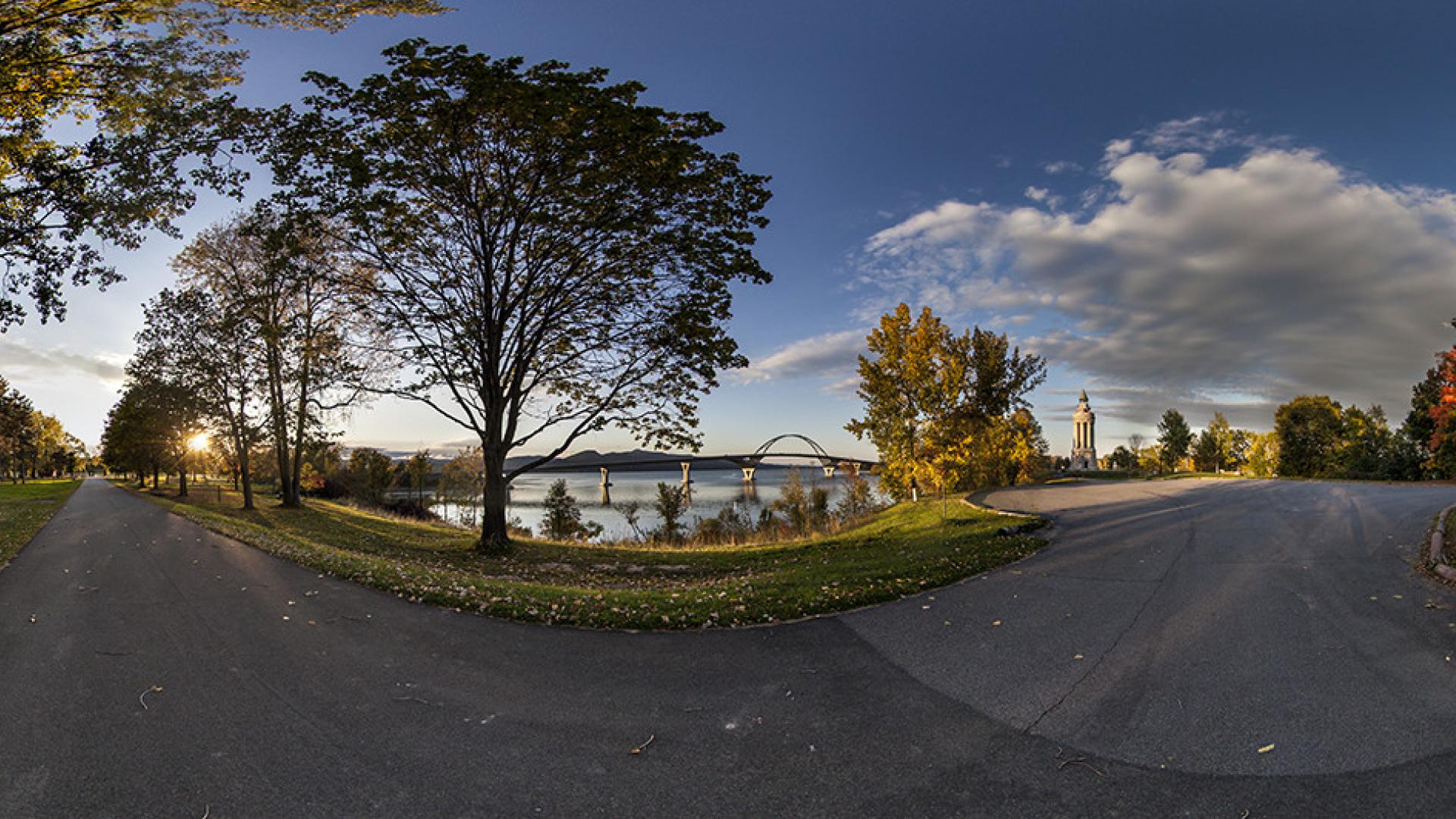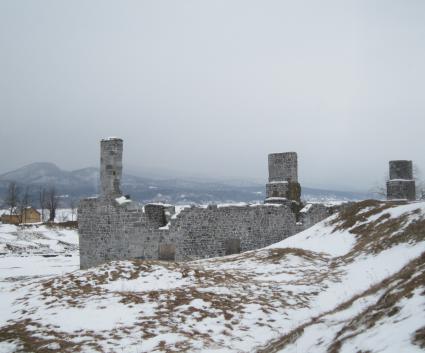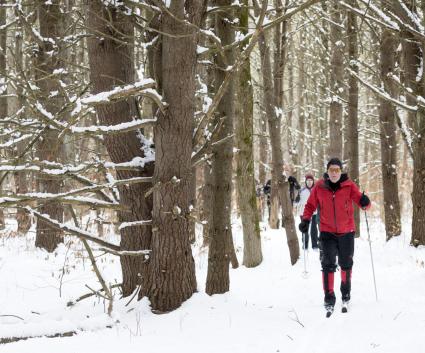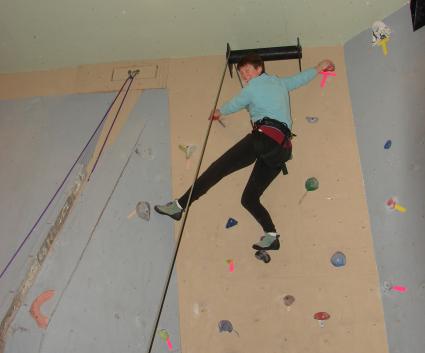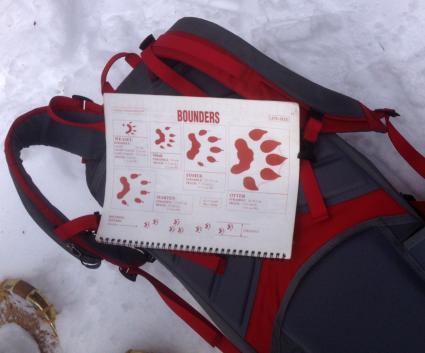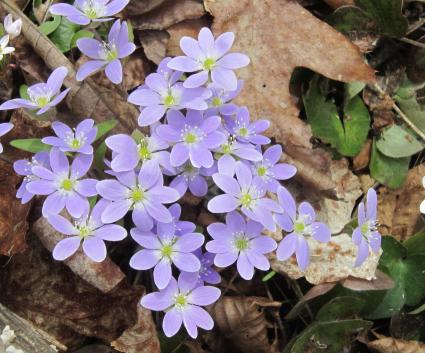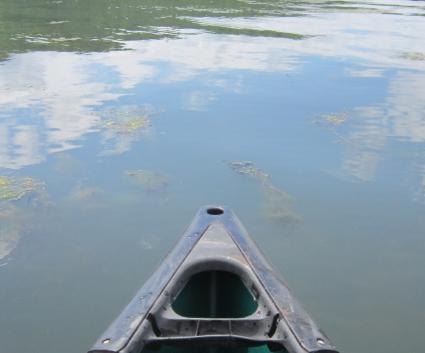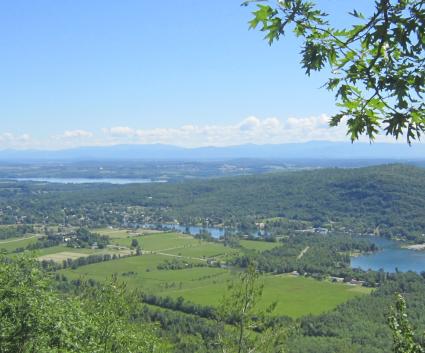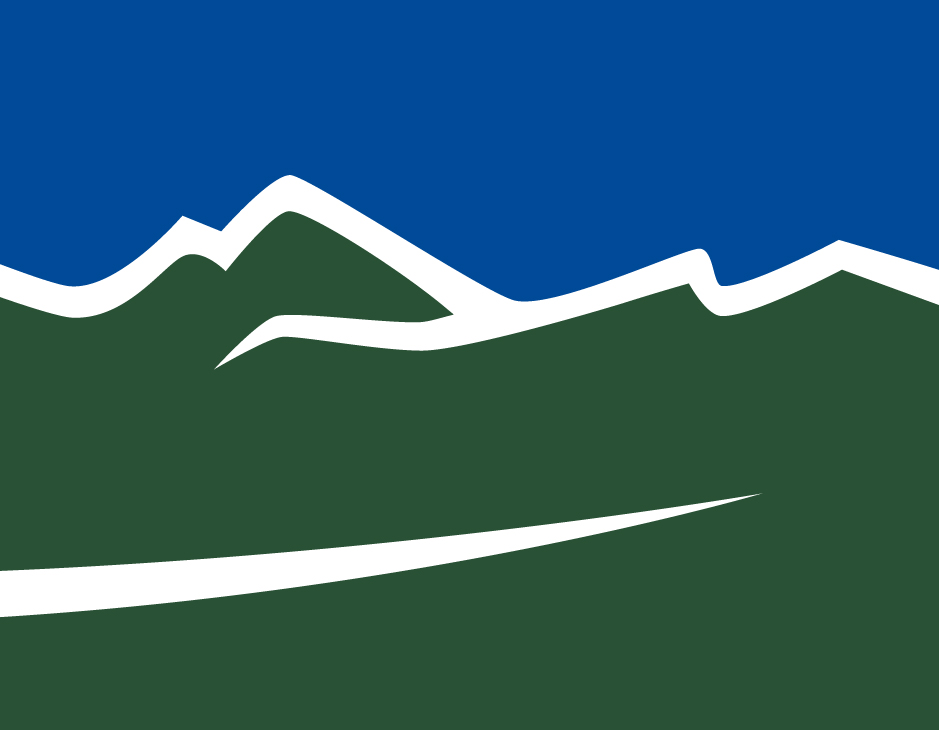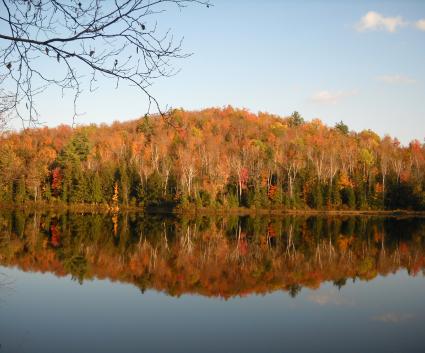Two
This week’s blog topic is “TWO” and I have been searching for inspiration ever since the assignment. This has had me thinking like Noah for days. The Lake Champlain Region has an abundance of everything. Where are the important twos I should be blogging about? Distracted by having to thaw water pipes twice this past week and continually having to search for my second glove, I began to feel plagued by twos. It finally hit me. Like the missing second glove, one of the region’s most important “twos” was right under my nose.
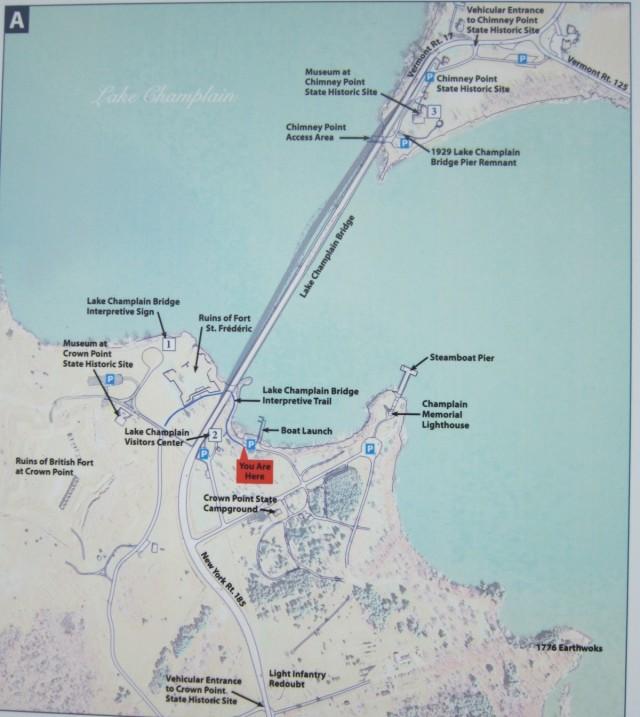
Lake Champlain Bridge Heritage Area
My office, the ROOST- Lake Champlain Region office, is located in the Lake Champlain Visitors Center at the foot of the Lake Champlain Bridge. This building is on the National Historic Register. It served as the original toll collector’s house for the 1929 bridge. Therefore, welcoming visitors to the Adirondacks is actually its second life. The building sits within two parks, the Adirondack Park and the Lake Champlain Bridge Heritage Area, a bi-state park that I find has several important “twos” worth telling you about.
This specific location has been recognized as a significant asset by two federally designated programs. It is at the heart of the National Heritage Area, Champlain Valley National Heritage Partnership, and on the National Scenic Byway, Lakes to Locks Passage. The natural, cultural, historical and recreational opportunities here are outstanding. Keep reading for a brief tour and make note of the “twos.”
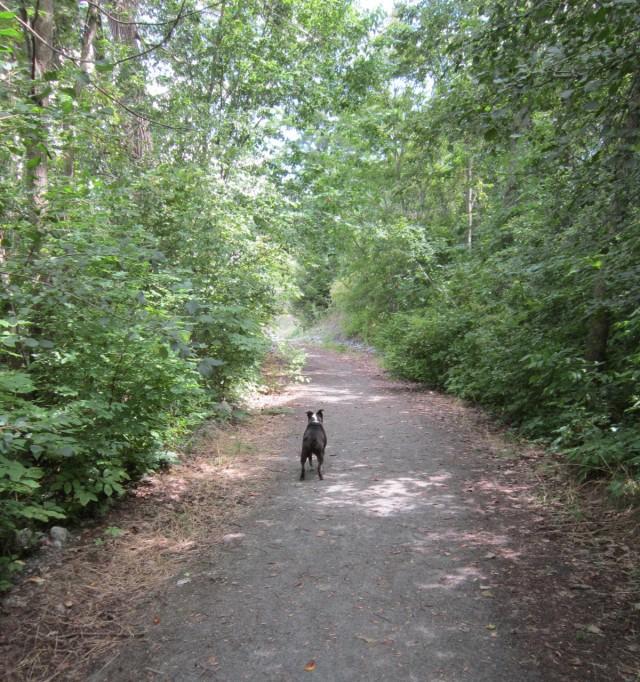
Center Stage
Center stage within this bi-state park is the Lake Champlain Bridge. This bridge does more than connect the two states of New York and Vermont. It provides recreation opportunities and a phenomenal vantage point to view some of the valley’s best scenic beauty. This current structure is actually bridge number two. The first, or original 1929 bridge, served automobile traffic faithfully for 80 years. Today’s 2011 bridge also accommodates cyclists and pedestrians and allows a more personal connection to the surrounding environment. I’ve already described walking over the bridge in my Two Places at Once blog, but there is a second way to appreciate this gracefully engineered structure - by walking under the bridge on the Lake Champlain Bridge Interpretive Trail. A walk under provides a totally different experience. Bridge traffic will not be seen, only heard as vehicles rumble by overhead. There is plenty of shade to escape hot summer sun and abundant shelter from the bridge itself to duck from a quick cloudburst. Beneath the bridge is a great setting for a picnic, to toss a line in the water, or to contemplate trolls. You can even arrive to this trail by boat. There is easy access from one of the two transient slips on the dock at the NYS DEC Crown Point boat launch. There is a second boat launch across the lake on the Vermont side.
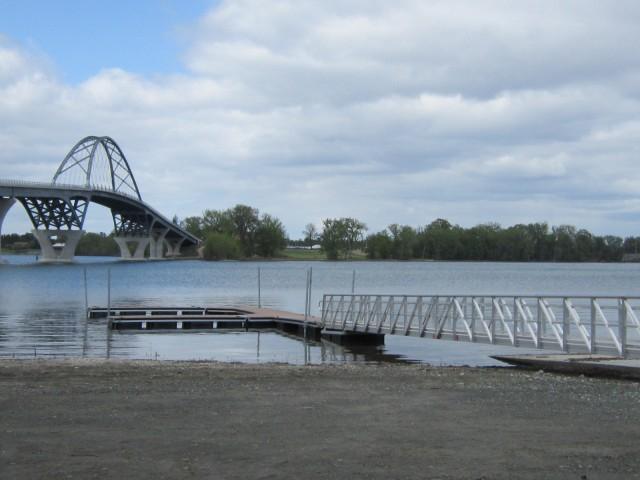
National Historic Landmarks
Passing under the bridge will bring you directly onto the Crown Point State Historic Site and in close proximity to Fort St. Frederic, one of two National Historic Landmarks on the grounds. The second NHL is the British fort ruins on the site, His Majesty’s Fort at Crown Point. There are approximately 85,000 National Historic Places nationwide, but of those only about 2500 have received National Historic Landmark status. To have two separate and distinct NHLs in such close proximity is uncommon and noteworthy. Fort St. Frederic was designated in October 1960, His Majesty’s Fort at Crown Point in October 1968.

Coveted Geography
Looking at a map, an aerial photograph, or even Google earth will allow you to gain an understanding of why this was such a strategic site in history and why this has been such a coveted piece of geography long before it was recognized as the perfect location to build a bridge. This is one of the narrowest spans on the lake, connecting two peninsulas. Back before the birth of our country, Europeans wanted to lay claim to the natural resources and riches of the New World. Getting around was most easily accomplished by water. Running north and south for approximately 125 miles, Lake Champlain was a very significant “blue highway.” Those that could control the “highway,” could control and claim the land, making this narrow section of lake very sought-after indeed, and a strategic location during the two wars: French and Indian, and Revolutionary.
At one time Fort St. Frederic was the seat of French power on the entire lake, one of the most important settlements in the northeast. All that remains of the fort today is fundamentally the foundation walls. Built in 1734, the French ended up destroying this fort themselves and retreating to Canada in 1759 when the British gained a stronghold in this region. They obviously did not want to leave the British a turn-key operation. They also destroyed the windmill used for grinding grain that was located at the present day site of the Champlain Memorial Lighthouse.
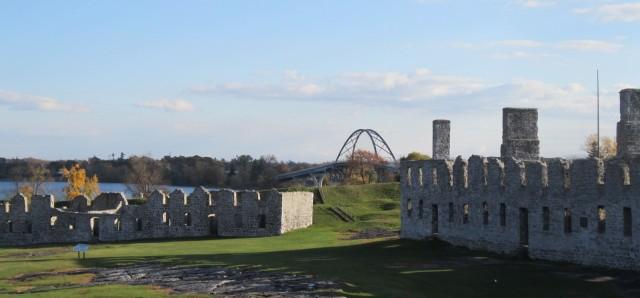
Once the British arrived, they began building an impressive fortification a few hundred feet away from the location of Fort St. Frederic and the lakeshore. It was a major undertaking and included plans for buildings spreading over 3 square miles. Plans for the barracks were to include housing for approximately 4000 men. The ruins of two stone barracks are visible today. Walking the peaceful grounds and poking inside these stone structures today it is hard to imagine the thousands that lived, worked, and fought here. It had to have been very active in the 1700s. You can learn all about this in the on-site museum and consider attending the French and Indian War Encampment.
Second Life for a Lighthouse
NYS Route 185 that crosses the bridge also bisects the New York peninsula. Crown Point State Historic Site rests on the western portion, NYS DEC Campground on the eastern side. Located within the campground is the Champlain Memorial Lighthouse and historic steamboat pier. The lighthouse is dramatic in its present form, but it began life as a simple New England style in 1858. It was given a second life when it was reworked and clad in its present, rather ornate, style as a memorial to Samuel de Champlain on the 300th anniversary of his exploration of this lake. Along with the renovation came two significant sculptures. France gifted us with an Auguste Rodin bust entitled La France because we were honoring one of their countrymen. Commissioned, as part of the rework, is the larger Carl Heber sculpture of Champlain and two scouts.
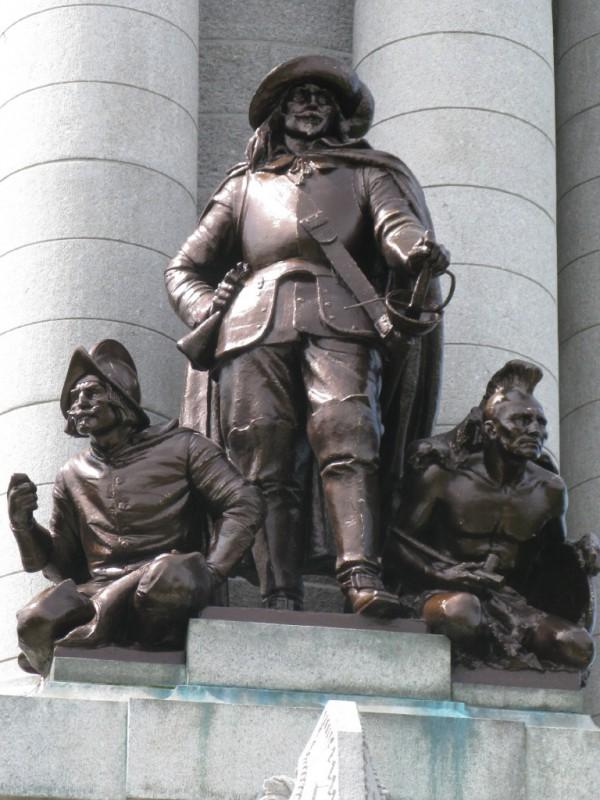
During summer months, when the weather permits, visitors may climb to the top of the lighthouse for a fantastic view of the bridge, the two mountain ranges, the Adirondacks and Green Mountains, and across the lake at Chimney Point State Historic Site in Vermont.
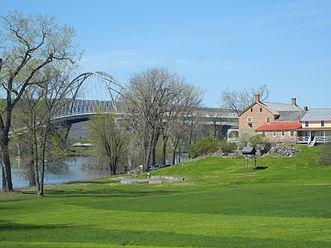
The Vermont Side
Before the French built Fort St. Frederic on the western (New York) side of the lake, they built a more modest fort on the eastern (Vermont) side. Constructed in stockade style, it was known as Fort de Pieux, or Fort of Posts and built around 1730-31.I t protected the French interest at this narrow point of the lake while the larger Fort St. Frederic was built across the water. Family settlement was also being encouraged surrounding the fort. It is estimated approximately 21 houses were built. These houses and the fort were destroyed along with Fort St. Frederic and the windmill across the lake, leaving nothing standing but chimneys; hence the name we know today, Chimney Point.
After the revolution, the 1785 tavern that houses the museum portion of the Chimney Point Historic Site today was constructed and immediately was a welcome respite for travelers making use of the lake or the Crown Point Road. Regular sail ferry service across the lake and a post office began as well. A visit to Chimney Point Historic Site will introduce you to the many artifacts and evidence indicating this site has witnessed human activity for 9000 years.
This Lake Champlain Bridge Heritage Area / bi-state park has been a very busy location over the years and seems to be filled with twos. I hope I’ve given you a minimum of at least two reasons to make you want to visit.
